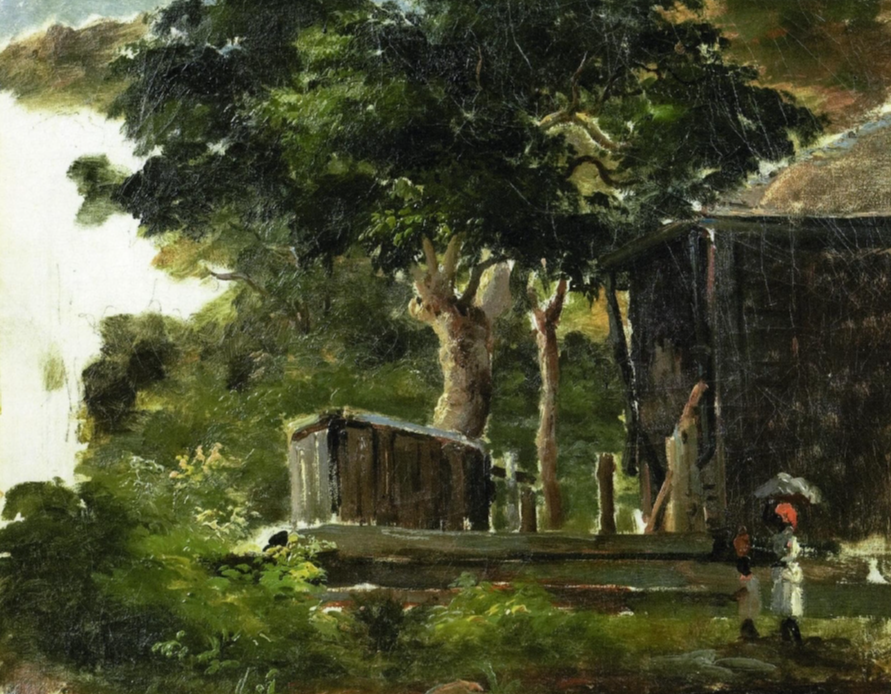
Jacob-Abraham-Camille Pissarro was born on July 10, 1830, on St. Thomas, in the Danish West Indies. He is a painter and printmaker who is a key member in shaping both Impressionism and Post-Impressionism, continuing to paint until his death in Paris on November 13, 1903. When Pissarro turned twenty-one, Danish artist Fritz Melbye, inspired him to take on painting as a full-time profession, becoming his teacher and friend. He studied paintings by other artists whose style impressed him such as Courbet, Charles-François Daubigny, and Corot. In these early years in France, Pissarro painted scenes of the West Indies from memory, and he found guidance from Melbye’s brother Anton. Because of his strong attraction to Corot he wanted to Reflect his influence on his paintings, Pissarro’s early paintings usually include a path or river similar to Corot’s paintings, while receding in perspective, as well as figures generally viewed from the back that give an overall sense of scale. When Pissarro showed his pieces in exhibitions, it changed impressionists’ perspectives. Impressionists normally desired to capture the effects of light and color in the modern world and generally avoided traditional modeling and composition, which is what Pissarro was known for. This is why during this period Pissarro spent time in rural areas, where he could find enough subject matter for landscape painting. His work from this early Impressionist period also displays the loose brushwork and absence of drawing that characterized other Impressionist art at the time.

View from my Window, Éragny-sur-Epte (1888) 
Landscape with House in the Woods in Saint Thomas, Antilles,
c.1854-55
The Treasury and the Academy, Gray Weather (1903) 
Young Peasant Woman Drinking Her Cafe au Lait (1881).
About five years later, despite all the problems disrupting the Impressionist exhibitions, Pissarro remained dedicated to his refusal to return to the salon. During this period he started to create more figure studies rather than landscapes as seen in Young Peasant Woman Drinking Her Café au Lait (1881). In 1855 he met the young avant-garde artists Georges Seurat and Paul Signac and started to convert to their new approach to painting, known as Neo-Impressionism. In accordance with this style, Pissarro applied paint to the canvas in dots of contrasting pigments, which the eye would perceive as a single hue. In his later years, Pissarro suffered from a recurring eye infection that prevented him from working outdoors for much of the year. As a result of this disability, he often painted while looking out the window of a hotel room. Pissarro died in Paris on November 13, 1903.
Leave a Reply